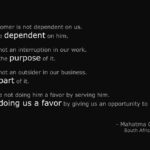This article first appeared in Commerce & Industry Magazine Vol 2 – 011
In the popular condensed version of Vision 2030 that provides an insightful summary of the bigger draft, the captivating preamble introduces Vision 2030 as the country’s development blue print that aims to transform Kenya into a newly industrializing, middle income providing a high quality life to all its citizens by 2030.
In the popular condensed version of Vision 2030 that provides an insightful summary of the bigger draft, the captivating preamble introduces Vision 2030 as the country’s development blue print that aims to transform Kenya into a newly industrializing, middle income providing a high quality life to all its citizens by 2030.
This begs the question, and very rightfully so, about what exactly ‘a high quality of life’ is. What is a high quality of life? Is this a subjective promise? Would the definition of high quality vary amongst, low, middle and high level income groups? How is this quality of life measured? Or in this case to be measured?
The document goes further to say that Vision 2030 was developed through an all inclusive and participatory stakeholder consultative process, involving Kenyans from all over the country as well as local and international experts. By just looking at this development strategy, this blue print for the country is a document of repute and indeed has received worldwide acknowledgement.
From a customer service angle, every tenet of service excellence has been well covered in its preparation: The outcome of quality is central to the plan; an all inclusive approach of top-down and bottom–up consulting was undertaken to listen to the voice of the ‘customer’ – here being the citizen; and consultation with experts in industry to adopt best practice was done. This would therefore presuppose that the outcome of such fantastic piece of literature would be the high quality of life touted in its mission right?
The economic pillar aims to improve the prosperity of all Kenyans, the social pillar to build a just and cohesive society and the political one to realize a democratic system founded on issue based politics that protects freedoms and respects the rule of law. If we take just this small excerpt and present it on its own, it is very easy to pick out the all the key words that form the basis of excellent customer service delivery. Improvement – this is an integral focus of excellent service delivery – to listen to customers and improve processes and services continually; Just and cohesive – this is the central focus for customer satisfaction – that organizations at whichever level are just and fair to their customers, deliver on their promises at all levels; cohesiveness is aligned to listening and seeking feedback and including ideas, thoughts and feedback; and finally respect – without which excellent customer service is impossible. The rule of thumb is to have a deep respect for internal and external customer and to respect one’s business to the extent that one’s brand is associated with service delivery. Vision 2030 is a well articulated piece that businesses can use as a skeleton to flesh out and adapt to their unique needs. With this analysis, it justifies the boldness to assert that the Vision 2030 document should be on every CEO’s desktop alike.
Although every aspect of Vision 2030 needs to be built on the firm foundation of great customer service, some aspects of the foundations contained therein require a little more emphasis on the need for a solid service excellence strategy to deliver on the goals. One of these is the foundation on human resource that seeks to create a globally competitive and adaptive human resource base that can meet the requirements of a rapidly industrializing economy. It is important for the entire human resource distinction to understand the value of the internal customer and seek to have service standards raised by having a customer centric workforce.
The foundation on security that focuses on keeping society free from danger and fear requires a police and judicial prison service that is reformed. All these sectors have recorded in history and continue to record some of the worst practices in customer service and require a constant and dedicated effort to turn things around.
The public service arena has seen tremendous improvement in leaps and bounds with regards to service delivery to the citizen. The three Huduma centers that are already in service in the different counties, and the ones in the process of implementation are moving the Vision 2030 foundation of having an efficient, motivated and well trained public service that is citizen-focused and results-oriented closer from theory to reality. There is still however quite a bit of work to do to have citizens recognize their rights to efficient public services and to demand for outstanding service from public institutions.
To achieve the outlined dream of making Kenya one of the top 10 long-haul tourist destinations in the world, our hospitality industry needs to raise the bar. The country is already doing quite well on provision of high quality service for international tourists. The same needs to be projected to domestic tourists, as it is a well known fact that word of mouth is the biggest seller and what a powerful sales force Kenya would have if the entire population 40 million were brand ambassadors, singing songs of praise?
And finally, there’s the old adage that ‘a healthy nation is a wealthy nation’. Is there really need to put any more emphasis on providing patients with health services of high repute? In October 2013 the Ministry of Health launched The Kenya National Patients’ Rights Charter. An excellent document intended to inform and educate patients on their rights to excellent health services that covers all aspects of healthcare from basic to tertiary level. With these kinds of brilliant initiatives already in place, Vision 2030’s pull towards an efficient and high quality health care system that provides the best standards is actually taking excellent shape.
In the second annual progress report on the implementation of the First Medium Term Plan(2008-2012) of Kenya’s Vision 2030 from the Monitoring and Evaluation Directorate in the Ministry of State for Planning, National Development and Vision 2030, many major, medium and minor gains have been outlined as well as areas for improvement. It is our assertion that all implementation projects towards the achievement of Vision 2030 and the key players involved in leading this strategy, should lean on the backbone of customer service and have this consciousness imbued in all undertakings. Should this customer focused mantra optimistically be taken up, then the 2ndMedium Term Plan progress report that will cover the period 2013 – 2017 promises to hold transformational results.
Let’s all toot the customer service horn towards this project and have it shift from a blue print to the promised ‘high quality of life’.








